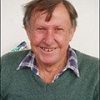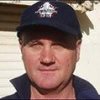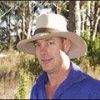Our Value Position
POLL HEREFORDS
Yalgoo Guarantees
- Commercially disciplined herd management based on economic rationale
- Fully described animals. Data gathered with acumen and integrity
- Breed leading performance
- Market acceptance of phenotype
- Industry Best Practise for Product QA and service
- Implementation of innovative technologies and techniques deemed of value to clients
- Committed to providing topical, economically valuable information to clients regarding beef profitability
MERINO
Yalgoo Guarantees
- Guaranteed, measurable genetic gain in the profit drivers
- Fully described rams. Data collected with acumen and integrity
- Industry best practise regarding Ram QA and customer service
- Implementation of innovative technologies and techniques deemed of value to clients
- Committeed to providing topical, economically valuable information to clients regarding sheep profitability
- Market acceptance of phenotype
- Disciplined, focused selection program driven by economic rationale
Business Overview
Our business consists of five enterprises:
- Bull breeding Hereford herd
- Cross breeding commercial cattle herd
- Commercial merino flock
- Ram breeding merino flock at Yalgoo
- Ram breeding flock in Tasmania (Ashby)
History
The first Nivisons migrated from the Nith Valley, Dumfriesshire, Scotland to Sydney, Australia in 1839. They leased land near Murrurundi (Hunter Valley, New South Wales) for 2/3 years before moving to the Walcha district. Towser Nivison took up his portion of Ohio (YALGOO) in 1919. Since then Jock Nivison AM and Grant have managed Yalgoo. Grant’s son Jock is the current custodian.
The Property
Yalgoo consists of 3,300 hectares of loamy pipe clay soils with some areas of basalt. The property has a long fertiliser history with improved pastures first introduced in the 1950s.
Climate
The New England growing season is characterised by summer dominant rainfall, with a 750 ml average at Yalgoo. Because of a relatively high altitude (1,133 meters), summer temperatures rarely exceed 35ºC and winter temperatures are often sub-zero.
There is high-pasture growth in spring and summer and little growth during winter with the majority of pastures experiencing an extended period of dormancy with severe frosts that can go from March to October. Dry periods are generally in March/April and August/September.
Management
Pasture
Our pasture renovation program is 2 yrs of Italian Ryegrass (Warrior bred at Gatton) followed by permanent pasture comprising Tall Fescue (Quantum max. summer growth), Prairie grass (winter growth) as well as Astrid red clover and Trophy white clover. Lime is applied pre-sowing.
We also irrigate 20 ha of Turnip/Rye grass and 60 ha of Plantain/Chicory/ Clover. Fertilising is strategic with annual manure applications to recently renovated pasture. Weed control is integrated using grazing and chemical application.
Grazing
Stock are rotational grazed at a winter stocking rate of 12-14 DSE/ha. Stud ewes and cows receive no preferential treatment over their commercial peers. Pastures are preferably grazed to 400 kg DM/ha to ensure ground cover is upwards of 90% year round.
Supplementary feeding is rarely implemented, with stocking rate our primary seasonal relief tool.



